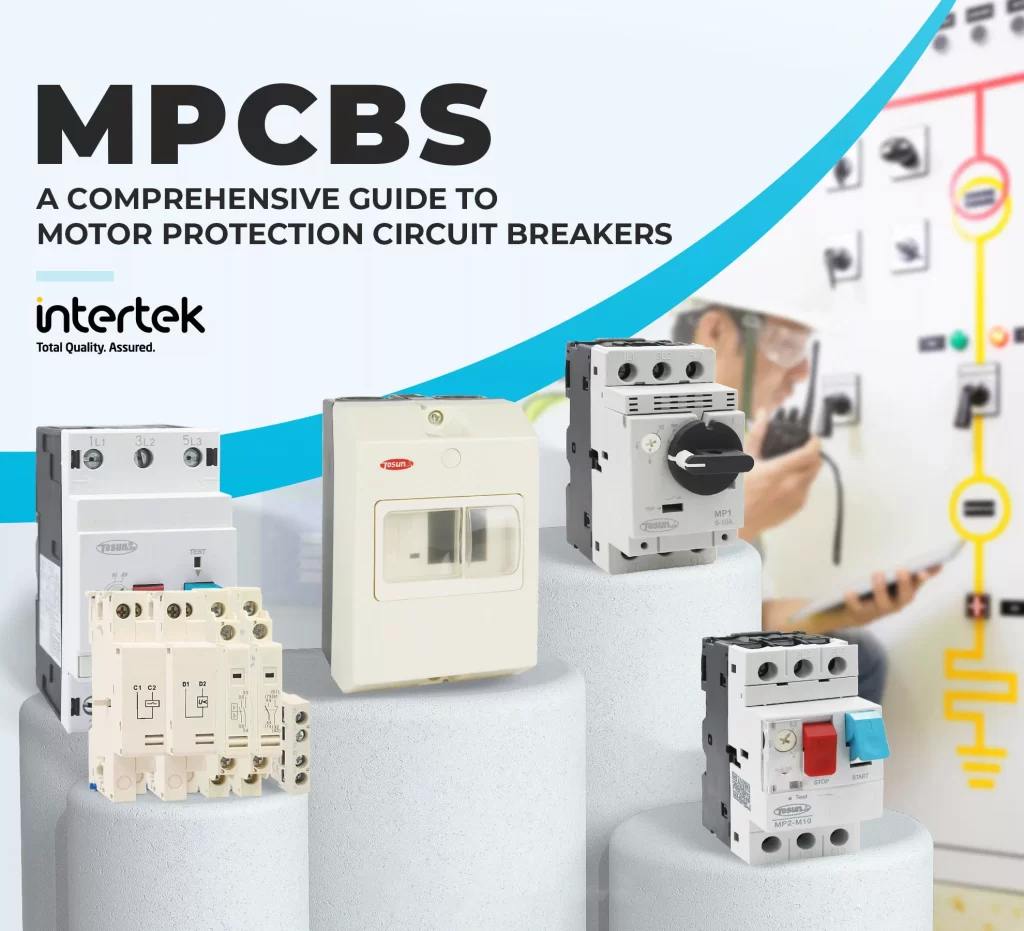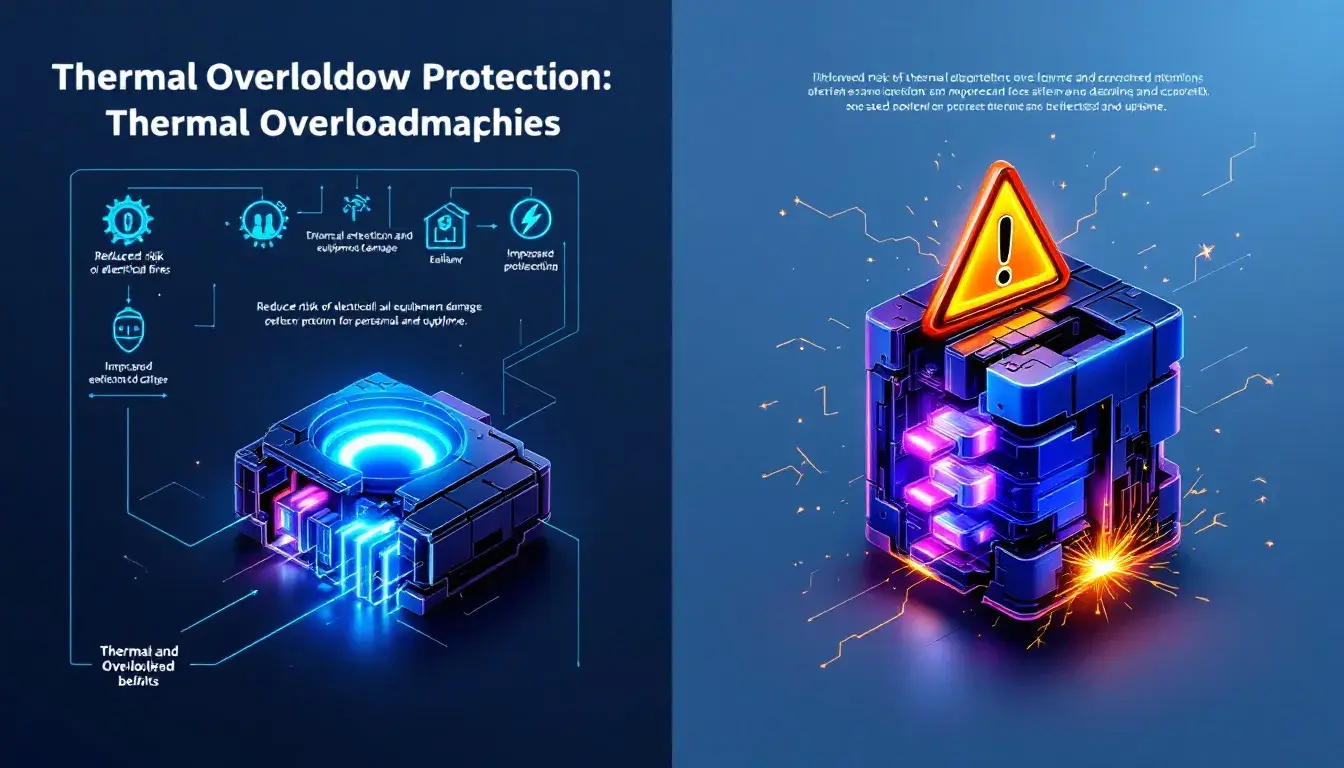How to Select the Mpcb Rating for Motor Protection Circuit Breaker?
Table of Contents
ToggleDid you know that selecting the right motor protection circuit breaker (MPCB) can significantly enhance the safety and efficiency of your motor-driven systems? Choosing the appropriate MPCB ensures optimum performance of motor-driven systems.
In this comprehensive guide, we delve into the essentials of choosing the perfect MPCB for your needs. Here’s what you can expect:
- Understand Motor Specifications: Learn how to determine the correct MPCB rating based on your motor’s specifications.
- Withstand Capacity: Discover the importance of a breaker’s ability to handle high currents.
- Thermal and Magnetic Protection: Explore why these features are crucial for overload and short circuit protection.
- Environmental Considerations: Ensure your circuit breakers perform reliably, even in harsh conditions.
Equip yourself with the knowledge to make informed decisions, ensuring optimal performance and safety for your industrial applications.
What Is a Motor Protection Circuit Breaker?

A Motor Protection Circuit Breaker (MPCB) is a device designed to safeguard electric motors from damage, including motor overload protection. It does this by cutting off power in case of issues like overloads, short circuits, or phase losses in three-phase motors.
Key Features: Motor Overload Protection
- Space-Saving: MPCBs are compact, providing fuseless protection by instantly shutting off power during a short circuit.
- Overload Protection: They have an adjustable bimetallic strip that prevents overheating by disconnecting power if the current exceeds safe levels. This strip can be set between 40% and 100% of the motor’s rated current.
- Automatic Functions: Some MPCBs can automatically reconnect once the motor cools down.
- Versatile Use: Ideal for various motor-driven systems, ensuring reliable motor protection and enhancing the motor’s performance and safety.
- Auxiliary Contact: Auxiliary contacts are essential components that enhance the functionality of MPCBs. They can be side-mounted and use screw connections to improve operational efficiency and safety in electrical systems.
Example:

If a motor is rated at 10 Amps, the MPCB should be set to handle slightly more than this, like 12 Amps, to ensure it can manage startup currents without tripping. This setting also provides essential thermal protection against overloads and short-circuits, which is vital for meeting safety and compliance requirements in electrical installations.
By using an MPCB, you ensure your motor operates safely, avoiding costly downtime and enhancing its efficiency and lifespan. Remember, selecting the right MPCB is crucial for protecting your motor and maintaining its optimal performance.
How to Select the Right Motor Protection Circuit Breaker?
Selecting the right motor protection circuit breaker is crucial for ensuring the safety and efficiency of your motors. Here’s a simple guide to help you make the right choice:
- Identify Motor Specifications: Start by checking the motor’s nameplate for its rated current and voltage. This information is essential for choosing a compatible circuit breaker.
- Determine Current Capacity: The circuit breaker should handle the motor’s maximum current. For example, if your motor’s rated current is 10 Amps, choose a circuit breaker with a capacity slightly higher, such as 12 Amps, to ensure safe operation.
- Check Withstand Capacity: This is the breaker’s ability to tolerate high current for a short duration. If your motor experiences a startup current of 30 Amps, ensure the breaker can handle this without tripping.
- Consider Thermal and Magnetic Protection: Look for breakers with thermal and magnetic release features. These provide protection against overloads and short circuits, respectively.
- Evaluate Voltage Rating: Ensure the breaker’s voltage rating matches or exceeds your motor’s requirements. For instance, if your motor operates at 400 volts, select a breaker rated for at least 400 volts. Additionally, consider the importance of undervoltage release in protecting equipment from low voltage conditions.
- Consider the Branch Circuit: Evaluate the branch circuit for providing various protections such as overload, short circuit, and ground fault protection. This ensures safety and compliance with electrical codes.
- Assess Environmental Conditions: Consider where the motor will be used. If it’s in a harsh environment, choose a breaker designed to withstand conditions like dust or moisture. Also, ensure covering unused terminals to provide protection against direct contact.
- Role of Combination Motor Controllers: Understand the role of combination motor controllers in providing comprehensive motor protection. These controllers offer disconnecting means, protection against short circuits, and motor overload protection. Familiarize yourself with types such as Type E and Type F, and their compliance with relevant electrical codes and standards.
By following these steps, you can select a motor protection circuit breaker that provides reliable motor protection, enhances performance, and ensures safety in your motor-driven systems.
Conclusion
This article provides a comprehensive guide on selecting the right motor protection circuit breaker (MPCB) to enhance the safety and efficiency of motor-driven systems. It highlights the importance of understanding motor specifications, determining current capacity, and considering thermal and magnetic protection. It also emphasizes evaluating withstand capacity and environmental conditions.
For reliable motor protection and optimal performance, choose the correct MPCB to provide reliable motor protection, safeguarding motors from overloads and short circuits. For high-quality circuit breakers, contact TOSUNlux, a trusted manufacturer, to ensure your motors are well-protected and efficient.
Tel: +86-577-88671000
E-mail: ceo@tosun.com
Skype: tosunelectric
Wechat: +86-139 6881 9286
WhatsApp: +86-139 0587 7291
Address: Room No.1001 Wenzhou Fortune Center,Station Road, Wenzhou, China
REQUEST A QUOTE
WhatsApp us
 : +86-139 0587 7291
: +86-139 0587 7291 English
English Español
Español Русский
Русский Français
Français العربية
العربية Português do Brasil
Português do Brasil Українська
Українська Türkçe
Türkçe Polski
Polski Nederlands
Nederlands Italiano
Italiano Bahasa Indonesia
Bahasa Indonesia हिन्दी
हिन्दी اردو
اردو አማርኛ
አማርኛ Հայերեն
Հայերեն ไทย
ไทย Монгол
Монгол فارسی
فارسی Shqip
Shqip Ελληνικά
Ελληνικά


